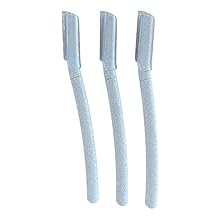
Data | How much more will petrol prices increase in India?
The Hindu
While the prices may continue to rise, the extent of the increase may slow in the coming days
Latest data show that the incremental rise in petrol prices in the last 17 days may continue for some more time. However, with the crude oil prices softening from the highs recorded in March, and the exchange rate improving slightly, the degree of the rise in retail petrol prices may reduce in the coming days. But meaningful reduction in retail prices can only be expected if the government cuts the Centre’s excise duty component further.
In the last 17 days, the retail petrol prices were revised upwards 14 times. From ₹95.41 on March 21, the retail petrol price in Delhi increased to ₹105.41 by April 7 (Chart 1). In other metros such as Mumbai, Kolkata and Chennai, the prices reached record levels of ₹120.51, ₹115.12 and ₹110.85 per litre, respectively, depending on the State’s taxes.
After Deepavali on November 4, 2021, the price of petrol did not increase for over 138 days until March 22. Around Deepavali, the central excise duty was cut. This was later followed up by a reduction of Value Added Tax (VAT) in some States. After these two tax cuts, the retail petrol prices stayed put for a long time, likely owing to the Assembly elections in five States: Uttar Pradesh, Punjab, Goa, Manipur, and Uttarakhand.
The excise duty cut in November became necessary as crude oil prices were rising at the time. Between September and November last year, crude oil prices (Indian basket) increased from $70.6/barrel to $83.6/barrel (Chart 2). And this had an impact on the retail price, which increased from ₹101.34/litre to ₹109.69/litre during that period in Delhi (Chart 5). The tax cuts brought the price down to ₹95.41 and the retail price stayed put thereafter.
However, after January 2022, crude prices soared again and the exchange rate fell, driving up import costs. Between January and March 2022, crude prices (Indian basket) increased from $77/barrel to $102/barrel. They peaked at $128/barrel on March 9. On March 24, crude prices recorded a relatively smaller peak of $117. During that period, the exchange rate also weakened from ₹74.51 to ₹75.81 (Chart 3).
Thus, from January, while crude prices increased and the exchange rate fell, retail petrol prices stayed put, most likely due to the Assembly elections, leading to an imbalance. Oil marketing companies were possibly informally asked not to increase the retail prices and bear the additional costs during this period. And therefore, to correct this imbalance, the retail prices have been raised several times after March 22.
The current retail prices in Delhi have not yet reached the highest level recorded before the excise duty cut in November 2021 (₹110 per litre). So, the retail prices may not immediately start plateauing.





















 Run 3 Space | Play Space Running Game
Run 3 Space | Play Space Running Game Traffic Jam 3D | Online Racing Game
Traffic Jam 3D | Online Racing Game Duck Hunt | Play Old Classic Game
Duck Hunt | Play Old Classic Game











